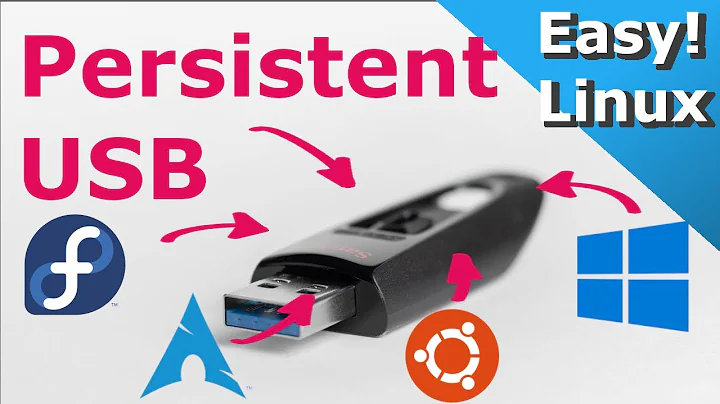I want to make a portable version of Linux Ubuntu
Full Install vs Persistent install
Consider doing a Full install to USB, It does not suffer from the irritating 20.04 disk check problem when booting.
A Full install USB and a Persistent install USB both save data and installed programs after reboot.
Comparison between Persistent and Full install USB
Advantages of a persistent install:
1) You can use the persistent pendrive to install Ubuntu to another computer.
2) A persistent install takes up less space on the pendrive.
3) You can reset the pendrive by overwriting the old casper-rw file with a new one.
4) The install to pendrive takes less time.
Advantages of a Full install:
1) You can update and upgrade.
2) If you have problems or wish to modify, the solution is the same as with an internal install, (You can ask for help in these forums).
3) No ugly startup / install screen.
4) Better security, you can use full encryption
5) You can use proprietary drivers.
6) Hibernation works.
7) A persistent install is limited to a 4GB casper-rw and a 4GB home-rw persistence file, to get more persistence requires persistence partitions. Once casper-rw is full, the drive will not boot.
8) More efficient usage of disk space. Does not require reserved space for persistence.
9) Faster boot, no automatic disk checking or Try Ubuntu/Install Ubuntu screen.
10) You can run VBox and use virtual machines.
Note that once booted, both methods run at about the same speed.
Full Install Method
One method for creating a Full install USB: How to Create a Full Install of Ubuntu 20.04 to USB Device Step by Step
Related videos on Youtube
Kevin Bowen
I route the packets that make the Internet sing. Contributor to Xfce Desktop Environment(DE) documentation: https://docs.xfce.org I have been a casual Linux user since Slackware 3.0 (Hello Walnut Creek!) and an Ubuntu user since around version 6.06 or 6.10. My primary professional skill set has been focused on the design, implementation, operation, and daily management of enterprise networks. This includes the configuration and operation of network hardware as well as the care and feeding involved in the network monitoring systems supporting them. The hardware includes routers, switches, firewalls, wan-optimizers, and occasionally load balancers (mostly Cisco, Riverbed, and f5 systems). Launchpad twitter
Updated on September 18, 2022Comments
-
Kevin Bowen over 1 year
I want to create a bootable version of Ubuntu on a USB that I can use on a Windows machine. Let me explain. I have a Windows machine and I want to be able to use Linux without getting VirtualBox or erasing Windows.
-
VidathD about 4 yearsSo basically, install Ubuntu to the USB instead of the HDD. That is convenient but not for beginners.
-
 Meninx - メネンックス about 4 years@Sasuke Uchiha: Making a full install USB was one of the first things I did as a beginner, and I did not have step by step instructions. There are advantages to a Full install if you don't need the drive to install Ubuntu. It is a good way to test everything without risking your hard drive.
Meninx - メネンックス about 4 years@Sasuke Uchiha: Making a full install USB was one of the first things I did as a beginner, and I did not have step by step instructions. There are advantages to a Full install if you don't need the drive to install Ubuntu. It is a good way to test everything without risking your hard drive. -
VidathD about 4 yearsI completely agree with you. However, you need some hardware knowledge as well as software knowledge. Most people are not comfortable with opening up and dismembering their PC.
-
 Meninx - メネンックス about 4 years@Sasuke Uchiha: Please see Note 2 in the Step by Step.
Meninx - メネンックス about 4 years@Sasuke Uchiha: Please see Note 2 in the Step by Step.


![[How to] Create Windows 10 Bootable USB on Ubuntu 20.04 | BIOS | UEFI | Step By Step (2021)](https://i.ytimg.com/vi/rJQk9KVekFI/hq720.jpg?sqp=-oaymwEcCNAFEJQDSFXyq4qpAw4IARUAAIhCGAFwAcABBg==&rs=AOn4CLDnaGNWyYn20AViB-mF8bmBKSIqEw)



